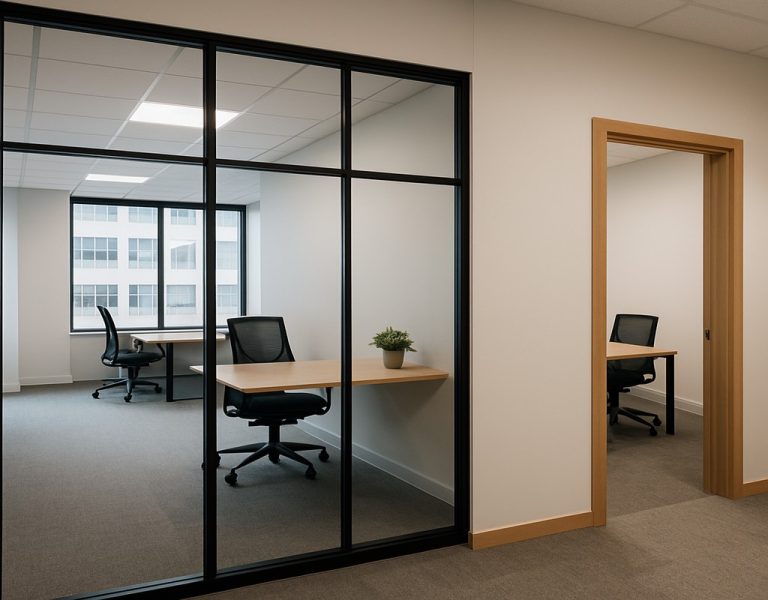Modern office design has changed fast. Many companies now seek spaces that are open and flexible. The choice between glass and drywall reflects this shift. Walls once meant separation but now they represent adaptability. Glass walls in particular symbolize openness. Drywall remains a traditional option yet it feels static. The modern workforce values communication. An office that promotes this can shape better collaboration. This debate has moved from construction into culture.
The Rise of Glass Walls
Glass walls reflect a new vision of space. They let light travel without barriers. This makes rooms feel larger and more alive. The energy inside such rooms grows stronger. Employees feel included in a larger environment. This reduces isolation and boosts morale. A glass wall removes visual barriers and builds trust. Natural light also reduces fatigue in long hours. Work becomes more pleasant in bright conditions. Transparency creates openness that builds a culture of unity.
The Familiar Comfort of Drywall
Drywall has been a standard for decades. It brings solid division to office layouts. Spaces built with drywall often feel permanent. There is a sense of privacy inside. Meetings or phone calls feel protected and contained. This makes drywall effective for confidential talks. Drywall can also support fixtures or shelves. The surface allows colors and textures to vary. This creates traditional comfort that appeals to conservative tastes. A drywall wall stands for quiet and focus. Some teams still value this solid feeling.
Transparency and Communication
Glass supports natural collaboration in shared spaces. People working across glass walls stay visually connected. This reduces hesitation and encourages simple interactions. When coworkers can see one another they engage more. Teams respond faster to changing needs and tasks. The presence of glass reduces walls of hierarchy. Everyone shares the same light and openness. This culture enhances trust and collective growth. Visibility often removes hidden barriers between managers and staff. An open environment reflects shared accountability and progress. Communication flows easily through transparent structures.
Adaptability and Flexibility
Modern offices need flexible structures for growth. Glass partitions can move or change with ease. This adaptability supports a shifting workforce and projects. Teams can expand quickly with minimal disruption. A drywall structure takes time and effort to alter. Glass enables faster changes without long downtime. Adaptable designs save resources and protect productivity. A flexible office space feels dynamic and alive. Companies prefer design that moves with ambition and progress. An office glass partition defines this new adaptable approach. The structure reflects how businesses now embrace constant change.
A Future Defined by Choice
Glass and drywall represent two visions of space. One looks forward while one holds tradition. Offices today balance between them for harmony. Many leaders choose glass for adaptability and light. Yet drywall still serves privacy and permanence. The best designs blend strength and openness. Work culture defines which material stands out most. A flexible office adapts to changing demands with grace. This future of choice reshapes how we define productivity. The right balance will inspire growth and modern collaboration. Both paths reflect the evolving heart of office design.


Comments are closed.